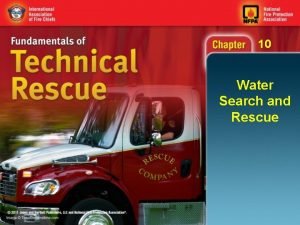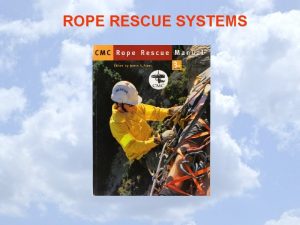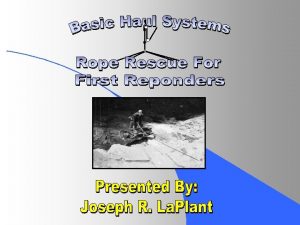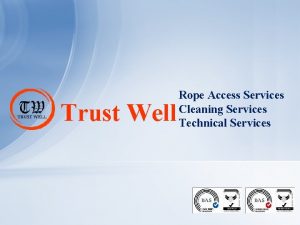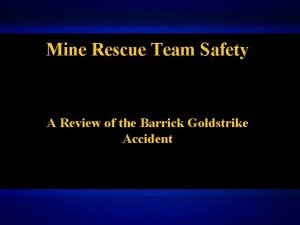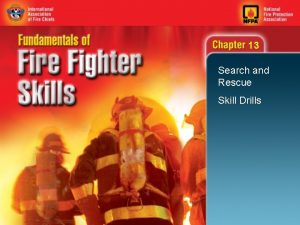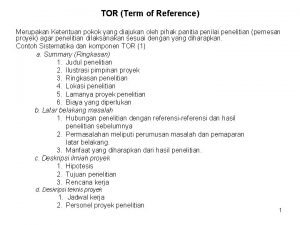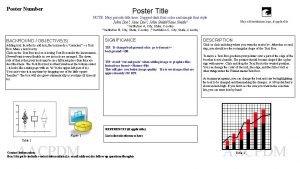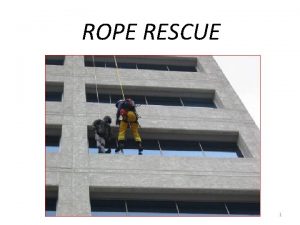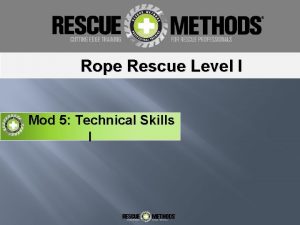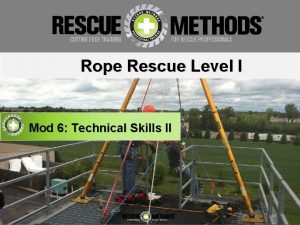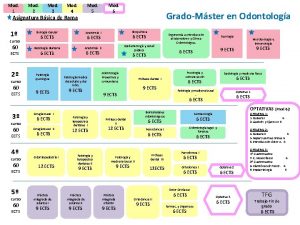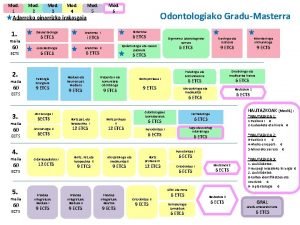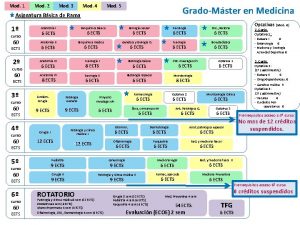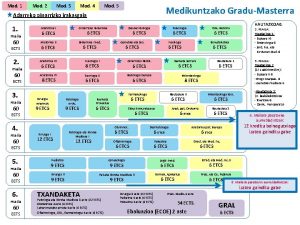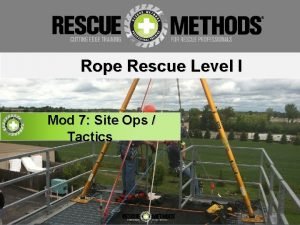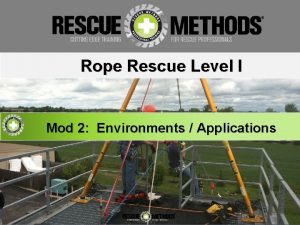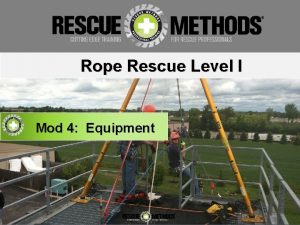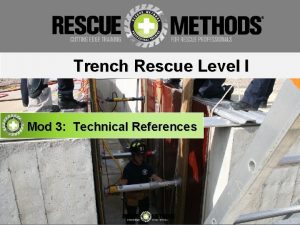Rope Rescue Level I Mod 3 Technical References















- Slides: 15

Rope Rescue Level I Mod 3: Technical References

HIGH ANGLE RESCUES �Rope Rescues �Often called Vertical Rescue, Technical Rescue or High Angle Rescue �Use of rope to stabilize and move a victim to safety �These rescues require many elements such as rope, hardware, and anchors. When these elements are combined to construct a functioning unit they are referred to as “systems” �“SRT” – Single Rope Technique is a term that refers to ascending and descending directly on rope without direct aid by contact with the rock, walls, or structures.

HIGH ANGLE RESCUES �Fire Service Rescue �Many changes since tragic incident in New York City in June of 1980 �IAFF, NFPA and ISFSI are active in advances in safety �NFPA 1983 was established to create safety standards for rope rescue equipment �Most significant change was in use of natural fiber ropes for rescue

HIGH ANGLE RESCUES �Industrial Rescue �High potential for high angle incidents in the industrial environment �Confined Space Rescue – specialized industrial rescue operation � Due to high death rates, OSHA created specific laws

HIGH ANGLE RESCUES �Tactical Operations �Law enforcement and military are employing more high angle operations �Contributions from tactical groups in equipment development � Special Air Service (SAS) in England credited for the Figure 8 with ears descenders

STANDARDS NFPA 1983 • Fire Service Life Safety Rope and System Components NFPA 1006 • Rescue Technician Professional Qualifications NFPA 1670 • Operations and Training for Technical Rescue Incidents

NFPA 1006 Standard for Rescue Technician Professional Qualifications �Standards that describe specific skill sets �Level I – Awareness and Operations �Level II - Technician

NFPA 1670 Standard on Operations and Training for Technical Rescue Incidents �Standards that describe procedures, guidelines and tactics for training and response.

NFPA 1983 Life Safety Rope and Equipment for Emergency Services �Labeling requirements �Design and construction requirements �Performance requirements �Testing requirements

Safety Factors �Industry and Construction � 5: 1 �Mountaineering / Self Rescue � 10: 1 �NFPA / Rescue � NFPA 1983 utilizes the term “Design Load” to describe the load for which a given piece of equipment or manufactured system was engineered for under normal static conditions. � 15: 1 (This is an approximate factor based on the following coefficients that varies slightly per NFPA. ) � � “L” Design Load – 300# Coefficient “G” Design Load – 600# Coefficient � The weight of the load may be less or greater than the given coefficient and should be calculated accordingly to insure safe equipment application.

Safety Factors 9 8 7 6 5 OSHA 5: 1 4 Mountain 10: 1 3 NFPA 15: 1 2 1 0 300# Load 600# Load

Fall Factors �The fall factor calculation is used to estimate the impact force on a rope when it is subjected to stopping a falling mass (“impact load”) �Calculated by dividing distance fallen by length of rope used to arrest the fall �. 25 and above consider high stretch ropes per NFPA 1983 �This can be applied by considering ¼ the overall length of rope as the maximum allowable fall distance. �This factor applies to dynamic rope and the given calculation does not accurately correlate to static rope. Fall factor calculations should be utilized as a general principle for safe practices.

FALL FACTORS

Standards �Agencies that set standards other than NFPA and OSHA �ASTM � International organization that sets high angle standards related to search and rescue, recreational climbing, and arboriculture �CE � European organization that sets high angle standards for recreational climbing, industrial fall protection, and rope access �UIAA � International organization that sets standards for ropes, harnesses, ice axes, helmets, and carabiners to be used by climbers and mountaineers.

Terms and References �Relevant to SF and FF calculations. �k. N = Kilo. Newton �Conversion factor to lbs. = 225 (estimate) �Common benchmarks are 20 kn and 40 kn which correlate to 4500 lbs. and 9000 lbs. �MBS = Minimum break strength �Represents the TS of a material at failure �TS = Tensile Strength �Represents a measurement of the greatest lengthwise stress under slow pull conditions that a rope can resist without failing
 Water search and rescue training objectives
Water search and rescue training objectives Radium release hitch
Radium release hitch Rope rescue terminology
Rope rescue terminology Trust well rope access company
Trust well rope access company Mine rescue 17-3
Mine rescue 17-3 Mine rescue level 13-11
Mine rescue level 13-11 Ncfe level 2 graphic design
Ncfe level 2 graphic design Plumbing nvq and technical certificate level 3
Plumbing nvq and technical certificate level 3 Reference in cv
Reference in cv Term.of reference
Term.of reference Ucas reference examples for teachers
Ucas reference examples for teachers Risk reference
Risk reference References apa format
References apa format How to put references on a poster
How to put references on a poster Five core principles of money and banking
Five core principles of money and banking Difference between bibliography and references
Difference between bibliography and references
